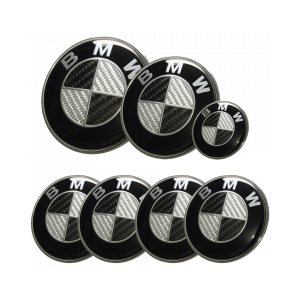oil cooler gasket 7.3
Understanding the Importance of Oil Cooler Gaskets in 7.3L Diesel Engines
When it comes to the maintenance and performance of your 7.3L diesel engine, one component that often gets overlooked is the oil cooler gasket. While it may not be as exciting as a turbo upgrade or a high-performance exhaust system, the oil cooler gasket plays a crucial role in the engine's overall health and efficiency. In this article, we will explore what an oil cooler gasket does, signs of failure, and tips for replacement to ensure your engine runs smoothly.
What is an Oil Cooler Gasket?
An oil cooler gasket is a sealing component located between the oil cooler and the engine block. Its primary function is to prevent oil leaks and to maintain the integrity of the oil cooling system. In a 7.3L diesel engine, which is known for its durability and heavy-duty performance, the oil cooler helps regulate the temperature of the engine oil, ensuring that it stays within optimal operating ranges. This is particularly important in diesels, where higher operating temperatures can lead to premature wear and potential engine damage.
How Does It Work?
The oil cooler works by diverting a portion of the engine oil through a heat exchanger, allowing it to cool down before it circulates back into the engine. The oil cooler gasket provides the necessary seal to keep the oil from leaking out of the system. It is typically made from durable materials that can withstand high temperatures and varying pressures, ensuring a reliable seal over time.
Signs of Oil Cooler Gasket Failure
Like any mechanical component, oil cooler gaskets can wear out or become damaged over time. Recognizing the symptoms of a failing gasket is critical to preventing costly repairs. Here are some common signs to look for
1. Oil Leaks One of the most obvious signs of a gasket failure is the presence of oil leaks near the oil cooler. If you notice oil pooling under your vehicle or around the cooler area, it's time to investigate.
2. High Oil Temperatures If the oil cooler gasket is compromised, it may hinder the cooling process. Consequently, you may observe higher oil temperatures on your gauge, indicating that the engine oil is not being cooled efficiently.
3. Coolant in Oil A more severe issue arises when the gasket fails to the point where coolant leaks into the oil system. This can cause a milky substance to form in your oil pan, indicating a serious problem that requires immediate attention.
oil cooler gasket 7.3

4. Low Oil Pressure A damaged gasket can lead to a drop in oil pressure as oil leaks out of the system. Your oil pressure gauge may reflect this decrease, which can pose significant risks to engine performance.
Replacing the Oil Cooler Gasket
If you have identified any of the symptoms mentioned above, it’s crucial to address the issue promptly. Replacing the oil cooler gasket is not a highly complex task, but it does require some mechanical skills and the right tools. Here’s a brief overview of the replacement process
1. Gather Tools and Parts Before starting, ensure you have all necessary tools, including wrenches, a torque wrench, and perhaps a gasket scraper. You will also need the new gasket and some engine oil for reassembly.
2. Drain the Engine Oil To prevent spills, drain your engine oil and remove any necessary components that may obstruct access to the oil cooler.
3. Remove the Old Gasket Carefully detach the oil cooler and scrape off any remnants of the old gasket. Be cautious not to damage the mating surfaces.
4. Install the New Gasket Place the new gasket onto the engine block, ensuring it is aligned properly. Reattach the oil cooler and follow the manufacturer’s torque specifications for the bolts.
5. Refill with Engine Oil Once everything is reassembled, refill your engine with the appropriate type and amount of oil, then start the engine to check for leaks.
Conclusion
Maintaining the health of your 7.3L diesel engine involves paying attention to its components, including the often-overlooked oil cooler gasket. By understanding its function and recognizing the signs of failure, you can prevent significant engine issues and keep your vehicle running smoothly. Regular inspections and timely replacements of the oil cooler gasket will contribute to the longevity and performance of your diesel engine, ensuring that it continues to meet your needs for years to come.
-
Simplifying Oil Changes: A Comprehensive Guide to Oil Drain Plugs and Their Variants
News Aug.04,2025
-
Mastering Oil Drain Maintenance: Solutions for Stripped, Worn, and Upgraded Oil Plugs
News Aug.04,2025
-
Fixing Oil Pan Plug Issues: Leaks, Stripped Nuts, and the Right Replacement Solutions
News Aug.04,2025
-
Everything You Need to Know About Oil Drain Plugs: Sizes, Fixes, and Upgrades
News Aug.04,2025
-
Choosing the Right Oil Drain Plug: A Guide to Sizes, Materials, and Drain Innovations
News Aug.04,2025
-
A Complete Guide to Automotive Drain Plugs: Types, Problems, and Innovative Solutions
News Aug.04,2025
-
The Ultimate Guide to Car Repair Kits: Tools and Essentials Every Driver Should Own
News Aug.01,2025
Products categories















